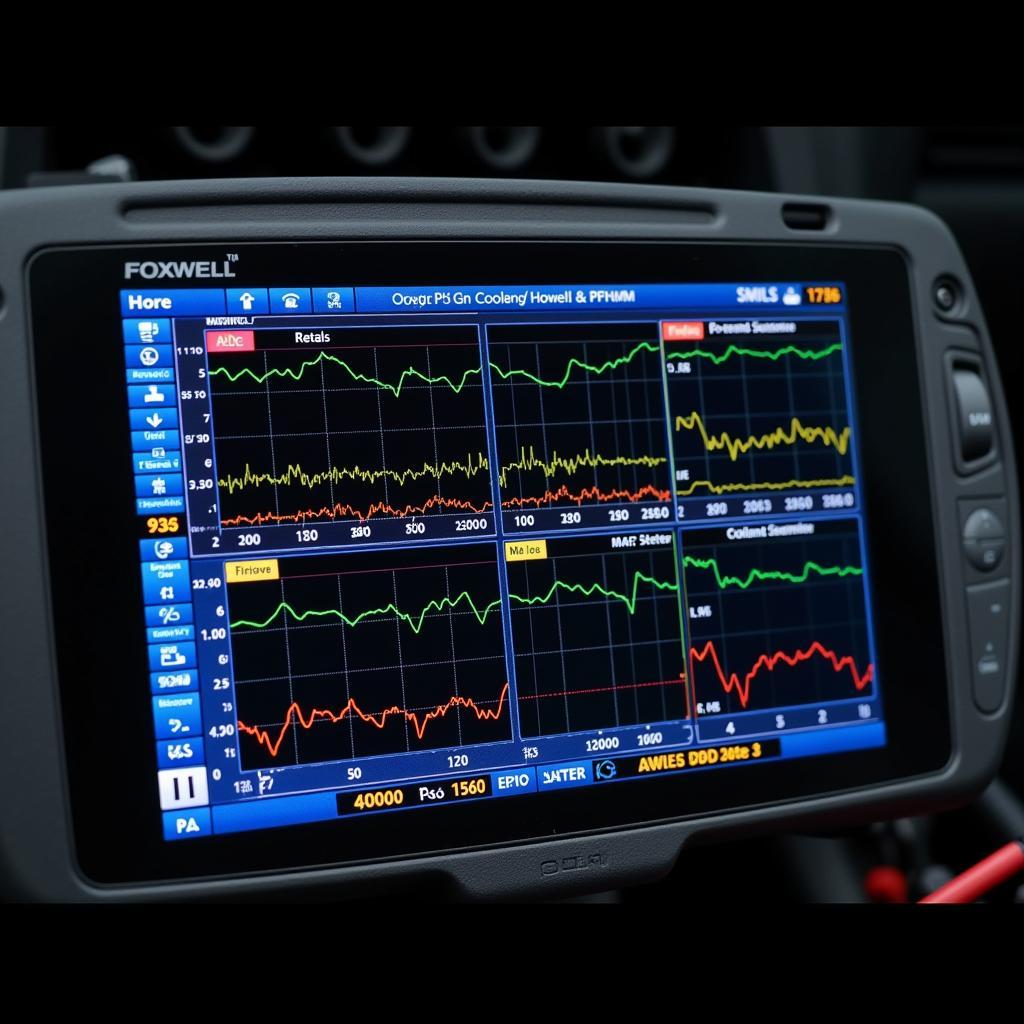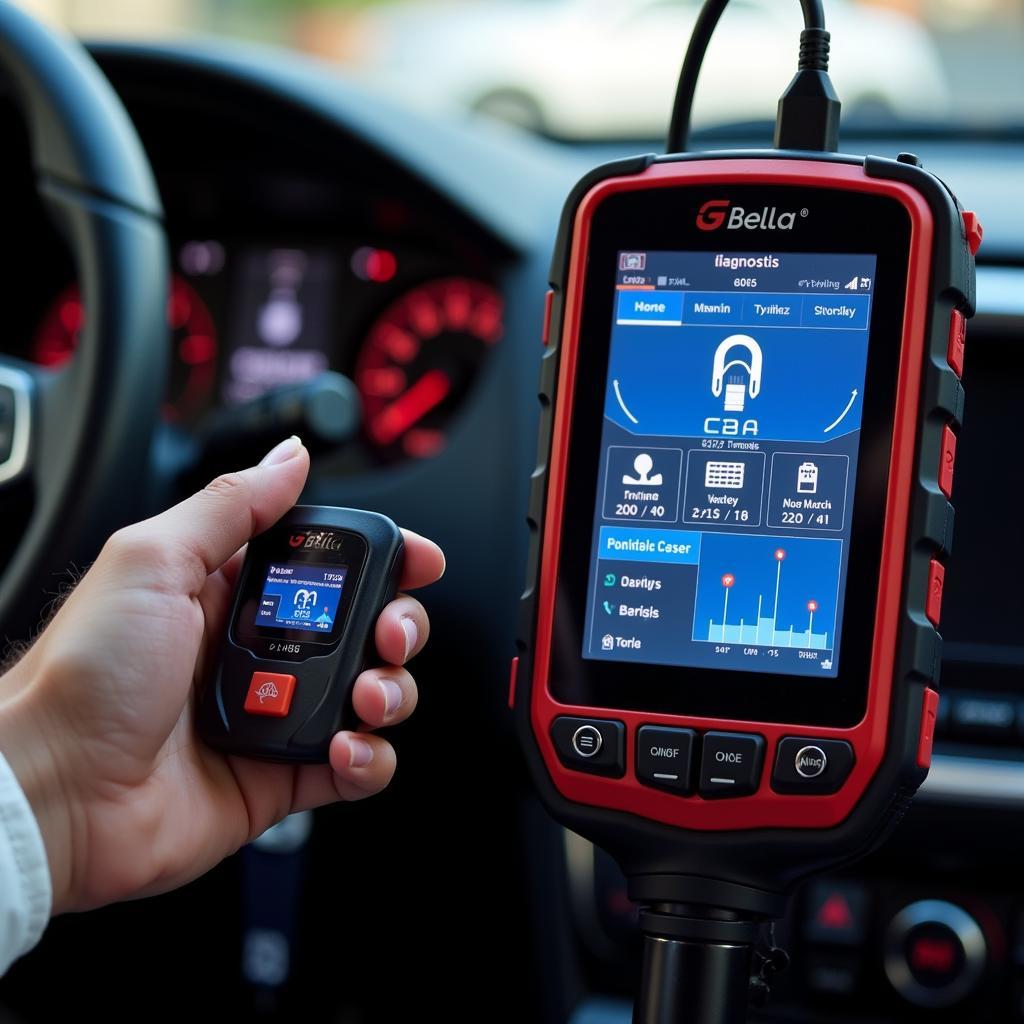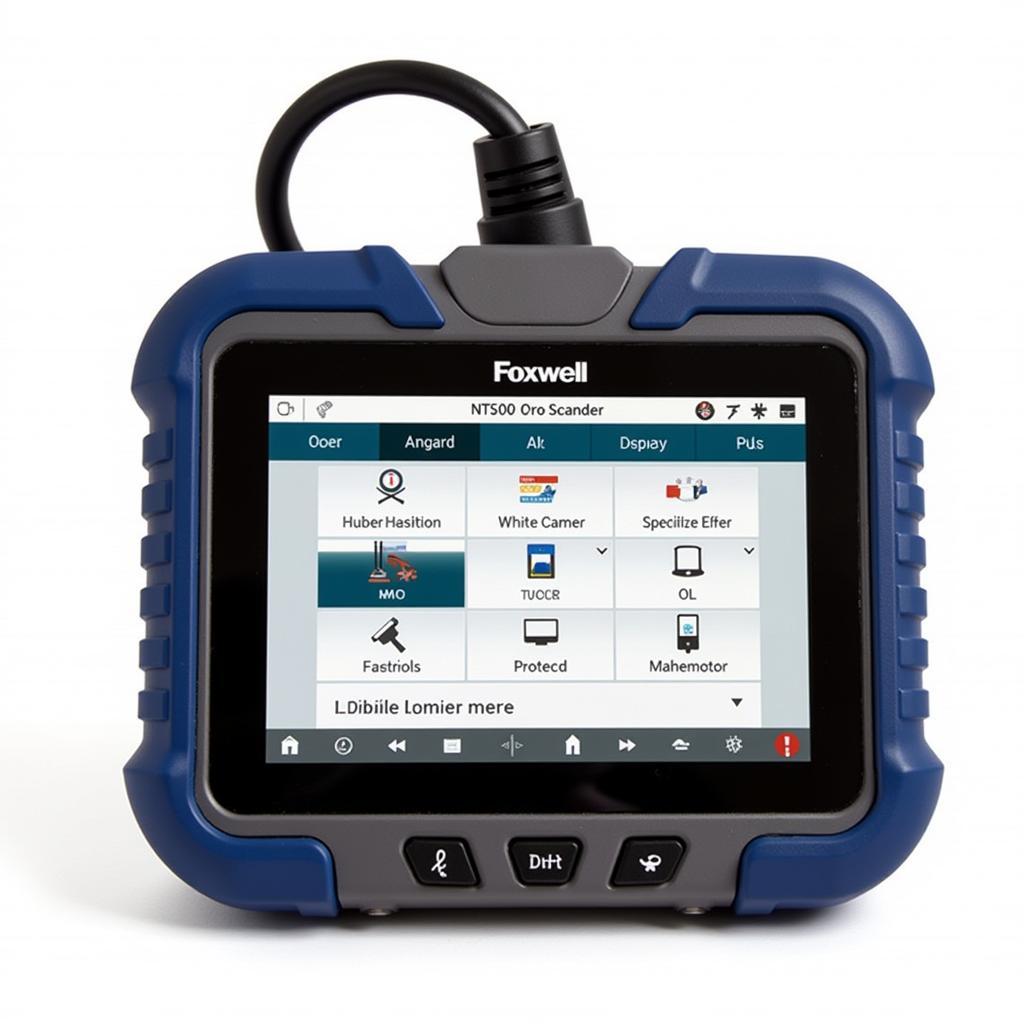Powertrain Diagnostic Trouble Codes (PD DTCs) can be a real headache for car owners and mechanics alike. Understanding what these codes mean and how to address them is crucial for keeping your vehicle running smoothly. This article will dive deep into the world of PD DTCs, focusing on how a Foxwell scanner can help diagnose and resolve these issues. We’ll explore everything from understanding the codes themselves to utilizing the advanced features of a foxwell nt510 obd2 scanner to pinpoint the root cause of your car troubles.
What are PD DTCs and Why Should I Care?
PD DTCs are diagnostic codes specifically related to your vehicle’s powertrain, which includes the engine, transmission, and associated components. When your car’s onboard computer detects a malfunction within the powertrain system, it generates a specific code. These codes, often starting with the letter “P,” are stored in the vehicle’s memory and can be retrieved using a diagnostic scanner like the Foxwell. Ignoring these codes can lead to more serious and costly repairs down the line. Understanding them allows you to address problems proactively and keep your car in top condition.
How Can a Foxwell Scanner Help Me with PD DTCs?
A Foxwell scanner is a powerful tool that allows you to read and interpret PD DTCs. It goes beyond simply displaying the code; it often provides detailed descriptions of the potential problem, possible causes, and even suggested repair procedures. The scanner’s ability to access live data from various sensors within the powertrain system can help pinpoint the exact location and nature of the fault. This level of detail is invaluable for both DIY mechanics and professional technicians. For example, the foxwell pro edition car scanner provides comprehensive coverage for various makes and models, making it a versatile tool for any garage.
Decoding the Mystery: Understanding PD DTC Structure
PD DTCs follow a standardized format. The first letter, “P,” designates the powertrain system. The second digit indicates the system category (0 for generic, 1 for manufacturer-specific). The third digit pinpoints the specific subsystem (e.g., fuel and air metering, ignition system, auxiliary emissions controls). Finally, the last two digits represent the specific fault within that subsystem.
Step-by-Step Guide to Using a Foxwell Scanner for PD DTCs
- Connect the Scanner: Locate your vehicle’s OBD-II port (usually under the dashboard on the driver’s side) and connect the Foxwell scanner.
- Turn on the Ignition: Turn the ignition key to the “on” position without starting the engine.
- Select “Read Codes”: Navigate the scanner’s menu to the “Read Codes” or “Diagnostics” option.
- View the DTCs: The scanner will display any stored PD DTCs. Take note of the codes and their accompanying descriptions.
- Further Diagnosis: Utilize the scanner’s live data capabilities to monitor sensor readings and pinpoint the problem area.
- Clear the Codes: After making the necessary repairs, use the scanner to clear the codes from the vehicle’s memory.
Common PD DTC Foxwell Scenarios
Imagine your check engine light comes on, and your Foxwell scanner reveals a P0171 code (System Too Lean Bank 1). This indicates a problem with the air/fuel mixture. The scanner’s live data function can then be used to check oxygen sensor readings, fuel pressure, and other relevant parameters to identify the root cause. Perhaps a vacuum leak or a faulty fuel injector is to blame. The david foxwell linkedin resource might provide additional insights into these scenarios.
“Using a Foxwell scanner empowers you to take control of your car’s maintenance. It transforms a cryptic code into actionable information.” – David Miller, Automotive Engineer
Advanced Foxwell Features for Tackling PD DTCs
Many Foxwell scanners offer advanced features beyond basic code reading. Some models offer bi-directional control, allowing you to activate specific components (like fuel injectors) to test their functionality. Others provide access to manufacturer-specific codes and data, which can be crucial for diagnosing more complex issues. You can learn more about specific Foxwell products through resources like su foxwell.
 Foxwell Scanner Displaying Live Data
Foxwell Scanner Displaying Live Data
Beyond the Codes: Tips for Effective PD DTC Diagnosis
While a Foxwell scanner is a powerful tool, it’s essential to combine its use with good diagnostic practices. Always consult your vehicle’s repair manual. Consider the symptoms you’re experiencing alongside the displayed codes. Don’t jump to conclusions; a thorough investigation is key to accurate diagnosis and repair.
“Don’t underestimate the power of a good visual inspection. Sometimes, the simplest solution is staring you right in the face.” – Sarah Johnson, Certified Mechanic
Conclusion
Understanding and addressing PD DTCs is essential for maintaining your vehicle’s health. The earl foxwell information might offer additional support for your automotive needs. A Foxwell scanner empowers car owners and mechanics with the ability to quickly and accurately diagnose powertrain issues, saving both time and money. By combining the scanner’s capabilities with sound diagnostic practices, you can keep your car running smoothly for years to come.
For any further assistance or inquiries, feel free to contact us.
ScanToolUS
Phone: +1 (641) 206-8880
Office: 1615 S Laramie Ave, Cicero, IL 60804, USA
FAQ
- What does PD DTC stand for? PD DTC stands for Powertrain Diagnostic Trouble Code.
- Where can I find the OBD-II port on my car? It’s usually located under the dashboard on the driver’s side.
- Can I clear PD DTCs without fixing the problem? Yes, but the code will likely reappear if the underlying issue isn’t addressed.
- Are all Foxwell scanners the same? No, different models offer varying levels of functionality and vehicle coverage.
- What should I do if I can’t figure out the cause of a PD DTC? Consult a qualified mechanic for professional diagnosis and repair.
- Do I need a Foxwell scanner to read PD DTCs? While other scanners exist, Foxwell offers a range of options with features tailored for various needs.
- Where can I find more information about specific PD DTCs? Consult your vehicle’s repair manual or online resources.


